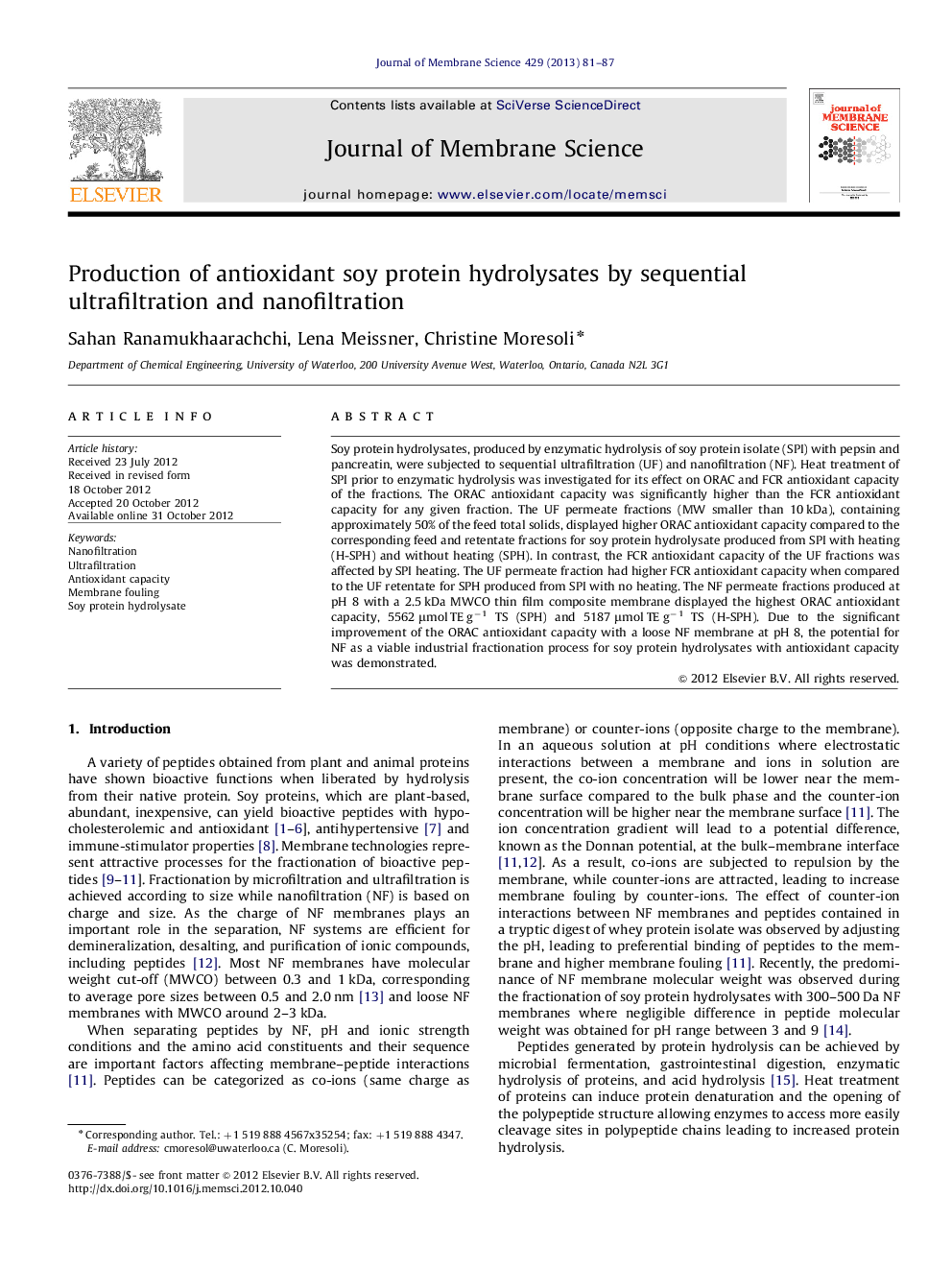| کد مقاله | کد نشریه | سال انتشار | مقاله انگلیسی | نسخه تمام متن |
|---|---|---|---|---|
| 634546 | 1456070 | 2013 | 7 صفحه PDF | دانلود رایگان |

Soy protein hydrolysates, produced by enzymatic hydrolysis of soy protein isolate (SPI) with pepsin and pancreatin, were subjected to sequential ultrafiltration (UF) and nanofiltration (NF). Heat treatment of SPI prior to enzymatic hydrolysis was investigated for its effect on ORAC and FCR antioxidant capacity of the fractions. The ORAC antioxidant capacity was significantly higher than the FCR antioxidant capacity for any given fraction. The UF permeate fractions (MW smaller than 10 kDa), containing approximately 50% of the feed total solids, displayed higher ORAC antioxidant capacity compared to the corresponding feed and retentate fractions for soy protein hydrolysate produced from SPI with heating (H-SPH) and without heating (SPH). In contrast, the FCR antioxidant capacity of the UF fractions was affected by SPI heating. The UF permeate fraction had higher FCR antioxidant capacity when compared to the UF retentate for SPH produced from SPI with no heating. The NF permeate fractions produced at pH 8 with a 2.5 kDa MWCO thin film composite membrane displayed the highest ORAC antioxidant capacity, 5562 μmol TE g−1 TS (SPH) and 5187 μmol TE g−1 TS (H-SPH). Due to the significant improvement of the ORAC antioxidant capacity with a loose NF membrane at pH 8, the potential for NF as a viable industrial fractionation process for soy protein hydrolysates with antioxidant capacity was demonstrated.
► Antioxidant capacity of soy protein hydrolysate was significantly improved by sequential UF and NF fractionation.
► Soy protein hydrolysate produced from soy protein isolate subjected to heating did not improve peptide fractionation.
► Electrostatic repulsion between NF membrane and peptides at pH 8 improved peptide fractionation and antioxidant capacity.
Journal: Journal of Membrane Science - Volume 429, 15 February 2013, Pages 81–87